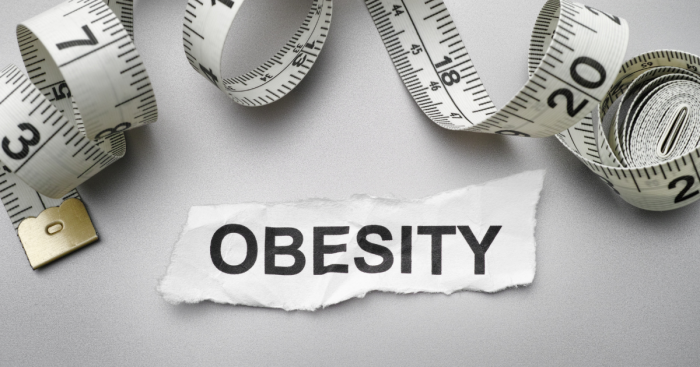When one does something often enough, it can be habit forming. The same applies to eating. Eating habits develop from very young and once set, are likely to continue into adulthood[1]. For children, they learn what, when and how much to eat by observing the behaviours of others and of course, by their own personal experiences with food.
Hence, food preferences and eating behaviours are established as soon as children are weaned. If these food preferences and eating habits are healthy, your children are eating well.
However, if they are snacking on highly processed and calorie-rich foods, eating in front of the TV, skipping breakfast, drinking heavily sugar-sweetened beverages, eating out or eating fast food frequently, then your child has formed bad eating habits. Since bad eating habits are formed in early childhood, and since parents are the ones who determine and provide the meals, parents play a very important role in shaping their children’s eating behaviours[2].
Bad Eating Habits and Obesity
Bad eating habits are the main cause of obesity among children. In Malaysia, the obesity and overweight rate among adults is 53.5% according to the National Health Screening Initiative 2023[3] .That’s more than half of the nation. Among children, up to 30% of Malaysian children are overweight and obese, according to the MyHealth portal[4] of the Ministry of Health, Malaysia.
In the National Health and Morbidity Survey (NHMS) 2022[5], it was found that one in three Malaysian teens aged 13 to 17 is overweight. Four in five are physically inactive, two in three lead a sedentary lifestyle, one in three drink soft drinks daily, one in 10 eat fast food at least three days per week and four in five don’t eat enough fruits and vegetables.
Not only does bad eating habits contribute to obesity, it can swing the other way and lead to underweight, stunting and wasting too[6]. Obesity and underweight are caused by eating an excessive amount of calories or an inadequate amount of micronutrients. This can lead to a range of health problems like cardiovascular and liver disease, breathing problems, asthma, easy susceptibility to infections due to low immunity, problems with hip development and bone growth in the legs, diabetes, gallstones, hormonal imbalance and other debilitating issues.
Bad eating habits interfere with a child’s normal growth and development. Here are some of the most common bad eating habits and suggestions on how you can turn them into healthy eating habits in children.
1: Binging on Unhealthy Snacks

The Malaysian foodscape is wide and plentiful. Just walk into any street and you will see it lined with stalls selling everything from kuih cucur to keropok lekor to apam balik. On top of that, there are the burger, satay and drink stalls and even street vendors who sell a range of home-made kuih and biscuits everywhere you turn. Being Malaysian, we can’t complain we have a shortage of snacks in all their oily, flour-based and heavily-seasoned variety. This is not even including the highly-salted and highly-processed packaged crisps and crackers we find in grocery store shelves everywhere. Eating too much of these snacks will satiate the stomach and interfere with the body’s internal schedule for proper meals. The child will be too full to eat when the time comes for proper mealtimes but will pack on the pounds regardless, from eating these empty calories that are devoid of any nutrition.
2: Eating Foods that are high in Fat, Sugar and Salt

Char Kuay Teow is an example of greasy food as are Roti Canai/Roti Bom/Roti Pisang and Nasi Lemak. Unfortunately, these meals are among our Malaysian staples and are available everywhere. To reduce the consumption of these and many other coffeeshop favourites, don’t buy these foods for your children so often. You can control what they are eating if you eat out or “bungkus” less and cook at home. Of course, there is that factor of convenience or you just don’t have the time to cook at home. In that case, choose foods that are steamed, braised or broiled. The same problem arises with fast food. The lure of fast food can be very irresistible to a child but eating too many burgers and deepfried chicken with French fries and having all that washed down with carbonated drinks will have your child putting on weight in no time.
3: Eating when not Hungry and Emotional Eating 
A lot of times, children will say they are hungry when they are actually just bored. They want something to munch on because there is nothing to do, so eating becomes something they can do to while away the time. Or maybe, they may be having a sweet tooth or craving they want to satisfy or they are feeling excited or sad or stressed. Eating when stressed or depressed is called emotional eating. Children often confuse hunger with emotions or feelings and use eating as a way to respond to those feelings.
There’s a term for this eating phenomenon. It is known as Eating in the Absence of Hunger or EAH[7]. It tends to develop between the ages of five and nine when children have gained a greater awareness of food or when their environment triggers them to eat – such as when seeing food they like. Eating highly palatable foods like sweets, dessert and candy or high-salt snacks when not hungry has been associated with childhood obesity in children under the age of 12.
One of the reasons for EAH includes not knowing when they are hungry and when they are not. Some children lose their sense of appetite regulation when parents force them to finish the food on their plates. Over time, children lose sensing their body’s cue as to when they should eat and when they should stop. Studies[8] show that EAH during childhood predicts binge eating during adolescence. It affects more girls than boys.
4: Refusing to Eat Vegetables or Fruits
This is a common problem with children. They don’t like eating vegetables because vegetables have a strange texture and a bitter taste. The same goes for fruits. Although fruits don’t taste bitter, some are sour or tasteless. Both fruits and vegetables are an acquired taste. Children who don’t like fruits and vegetables are usually picky eaters. They don’t only dislike fruits and vegetables, they also fear trying new foods and won’t accept eating certain foods like fish or seafood. Being picky about what they will and won’t eat will deprive the child of the many important nutrients and the fiber necessary for healthy digestion, growth and development.
6: Eating too Fast and Overeating
Some children light up when they see food. They want to eat it, whether they are hungry or not. It happens to adults too. The eyes trigger the stomach. As a result, they eat so fast that they overeat. They also swallow air in the process which will cause excessive bloating. Overeating causes a stomach ache and a spike in blood sugar levels. Repeated spikes in the blood sugar[9] can cause heart problems, kidney problems, problems with eyesight and nerve issues like neuropathy. Children, who move around a lot, are also at risk of choking or coughing when they eat and drink too fast.
Here are some ways to turn these bad eating habits around.
1: Be a good role model.
The best way for parents to encourage healthy eating is by modelling the behavior yourselves. Prepare healthy, balanced meals, serve appropriate portions, do not overeat, include variety into the meal and practice good eating habits. If you enjoy your food, and eat vegetables and fruits, your child will follow your lead.
2: Schedule mealtimes.

Children like the predictability. Scheduling when and what to eat provides a foundation of stability and security for children. It also promotes regular digestion to maintain a stable energy source. Just like sleep, the body has a circadian clock for eating. When these rhythms are constantly disrupted, and meals are skipped only to have them replaced with a larger meal because of hunger, it can lead to increased risk of obesity, Type 2 Diabetes and cardiovascular diseases. Start the day by eating breakfast. As its name suggests, breakfast breaks the overnight fast of the body and provides the energy needed to go through the day.
3: Eat slowly.
It takes the brain a few minutes to realise that the stomach is full. If you eat too fast, you will overeat because the brain cannot tell you in time that the stomach is already full. Eating slowly will also encourage your child to enjoy the taste of each food. Encourage your child to chew their food for at least 10 seconds before swallowing.
4: Pack breakfast or lunch for your schoolgoing children. 
This way, you can control what the child eats and prevent him or her from indulging in unhealthy foods. Make sure the lunchbox contains a nutritious snack, such as fruits or oats biscuits.
5: Eat together as a family.

Eating together encourages family togetherness. It is a time for family members to reconnect after a busy day. Keep mealtime conversations positive and neutral. Focus on enjoying the food and the camaraderie among each other during the meal. Children who eat together with their families typically eat healthier, feel more confident, and do better socially and in school[10].
6: Serve plain water.
Instead of giving them fizzy, high-sugared lifestyle drinks and juices, serve more plain water. Juices are alright once in a while, provided they have no added sugar and have been freshly squeezed. Most store-bought juices have added sugar and preservatives. More than food; it is these heavily-sweetened beverages that add to the sugar intake. According to Unicef, Malaysians consume around 3kg of the sugar per year in the form of sugary drink[11]. In the same report, the country has the second highest child obesity rate in ASEAN aged five to 19, with 7.1% of children under the age of five being overweight.
7: Avoid using food as a reward or as a way to show love.
A lot of Asian families show love through food. When you want to show love to your child, spend quality time with him or her instead. Actually, children value the time you spend together more than all the chocolates or ice cream you can buy for them. Give your child your time, a hug or praise to show love, and if you want to reward him, give him a non-food treat like doing a fun activity or going on an outing together.
8: Don’t force children to clean their plates.
Don’t pressure children to finish up everything on their plate. It may look wasteful to you but forcing them to clean the plate will only teach kids to override their feeling of fullness. Over time, they will lose their ability to tell when they are full and will continue to eat long after they are satiated. Moreover, they may develop a negative emotional feeling for the food they had been pressured to eat, leading to a reduction in liking for that food.
9: Introduce new foods including fruits and vegetables at the start.
Variety in the diet is key to proper nutrition. Children should be introduced to all kinds of food especially vegetables at the start of the weaning process. Studies say[12], introducing them to new textures and tastes in all their variety will increase later acceptance of new foods. If a child refuses a food, it doesn’t mean you should stop serving it. Repeated exposure, says the study, is a powerful mechanism to increase children’s acceptance of the new vegetable. You may need to serve the vegetable 20 to 30 times before a child will eat it but it will be worth the effort. Besides, young children are known to change their minds over their food preferences. Don’t force or bribe the child to eat it either. But seeing the food often enough will pique his curiosity to try it.









